RM Sotheby's Hershey Auction Preview
RM Sotheby’s will hold their 19th annual Hershey Auction October 8-9 featuring a stunning assortment of classic and vintage American cars set to cross the block. Alongside Steve McQueen’s 1952 Hudson Wasp there are plenty of cars that are even more collectible than McQueen’s Hudson. We’re going to take a look at a few of our favorites here.
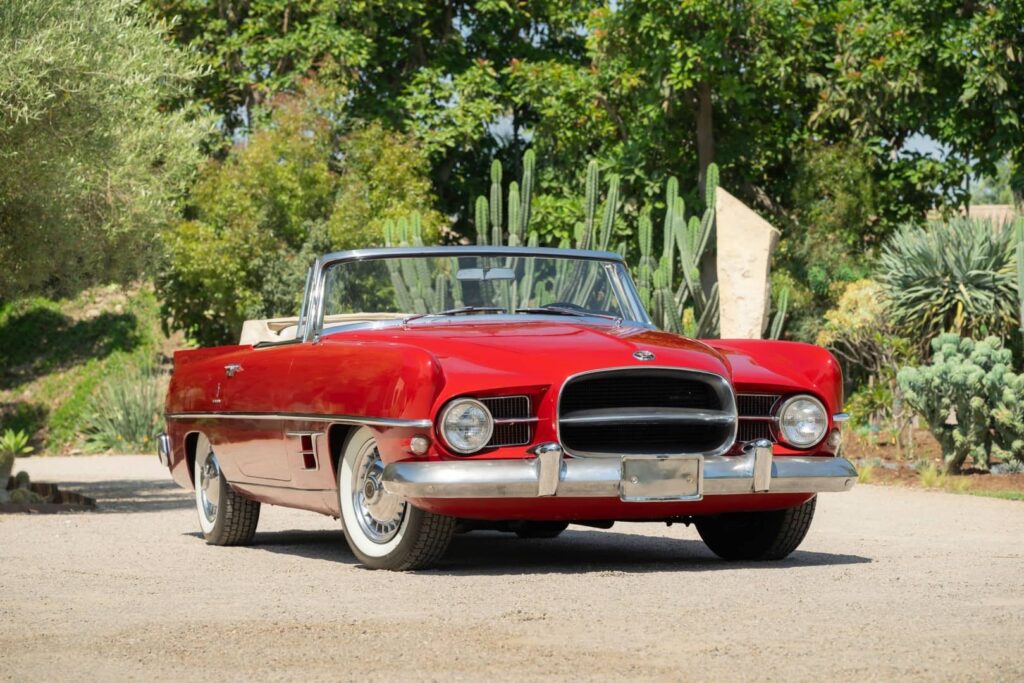
The 1958 Dual-Ghia Convertible represents a unique chapter in automotive history, born from a visionary cross-Atlantic collaboration between Detroit muscle and Italian craftsmanship. The project was spearheaded by Eugene Casaroll of Dual Motors in Detroit, who sought to create an ultra-exclusive, high-performance luxury car for America’s elite. The design originated from the 1955 Dodge Firearrow concept, but the mechanical components were simplified, utilizing powerful, reliable Dodge V8 engines and automatic transmissions. The rolling chassis were shipped to Turin, Italy, where the famed coachbuilder Ghia masterfully hand-formed and fitted the sleek, European-inspired aluminum bodywork. The resulting Convertible blended robust American engineering with sophisticated Italian styling, producing a car that was stunningly elegant yet effortlessly powerful.
This extreme hybridization and bespoke production process ensured the Dual-Ghia was one of the most exclusive and expensive cars available at the time, costing nearly $10,000 when a Cadillac could be had for half that price. Its astronomical cost guaranteed its scarcity; only about 102 of the original cars (including the 1957 model) were ever produced, with the 1958 model being among the rarest. This exclusivity immediately attracted high-profile celebrity owners, including Frank Sinatra, Dean Martin, and Peter Lawford, cementing its reputation as a status symbol for the mid-century Hollywood Rat Pack. The short-lived production run concluded in 1958 due to the complexity and cost of the international manufacturing process, but the Dual-Ghia still impresses collectors today.
The convertible Dual-Ghia that will be offered by RM Sotheby’s at their 2025 Hershey Auction comes from its second owner since new and remains in original condition. It boasts a thorough history and offers its next caretaker a choice between maintaining it as a survivor or a very strong starting point for a restoration.
Estimate: $300,000 – $350,000
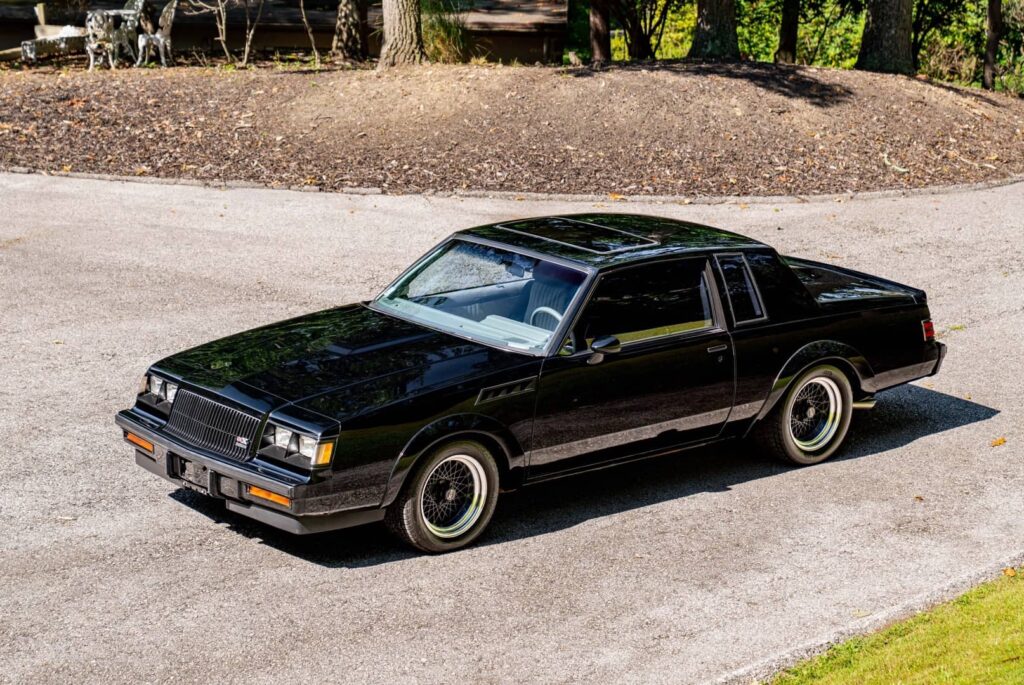
The 1987 Buick GNX, a spectacular finale for Buick’s rear-wheel-drive G-body platform, instantly became a performance legend. Recognizing the need for a truly dominant farewell, Buick collaborated with McLaren Performance Technologies/ASC to transform the already potent Grand National. This partnership resulted in a bespoke, hand-finished “supercar killer” designed for maximum speed and exclusivity. The GNX secured its legacy as the “Regal to end all Regals” and a dark horse champion of American engineering.
The GNX’s ferocity stemmed from its heavily modified 3.8L turbocharged V6 engine. McLaren extensively upgraded the turbo system, introducing a unique Garrett T-3 turbocharger with a ceramic impeller, a revised wastegate, and a more efficient intercooler and dual exhaust. Although officially rated at a conservative 276 horsepower and 360 lb-ft of torque, independent tests indicated closer to 300 hp. This understated power enabled the blacked-out coupe to deliver stunning, world-class acceleration, surpassing rivals like the Chevrolet Corvette and Ferrari Testarossa in the quarter-mile. Production was limited to just 547 units, instantly ensuring the GNX’s enduring status as an automotive icon and a highly valuable collectible today.
RM Sotheby’s will offer one of only three examples of the GNX equipped with the ASC/McLaren-installed moonroof, as documented in the Buick GNX Registry. The documentation includes its original window sticker, purchase order, and warranty book. It’s being offered with no reserve and an estimate of $90,000 – $120,000.
Estimate: $90,000 – $120,000
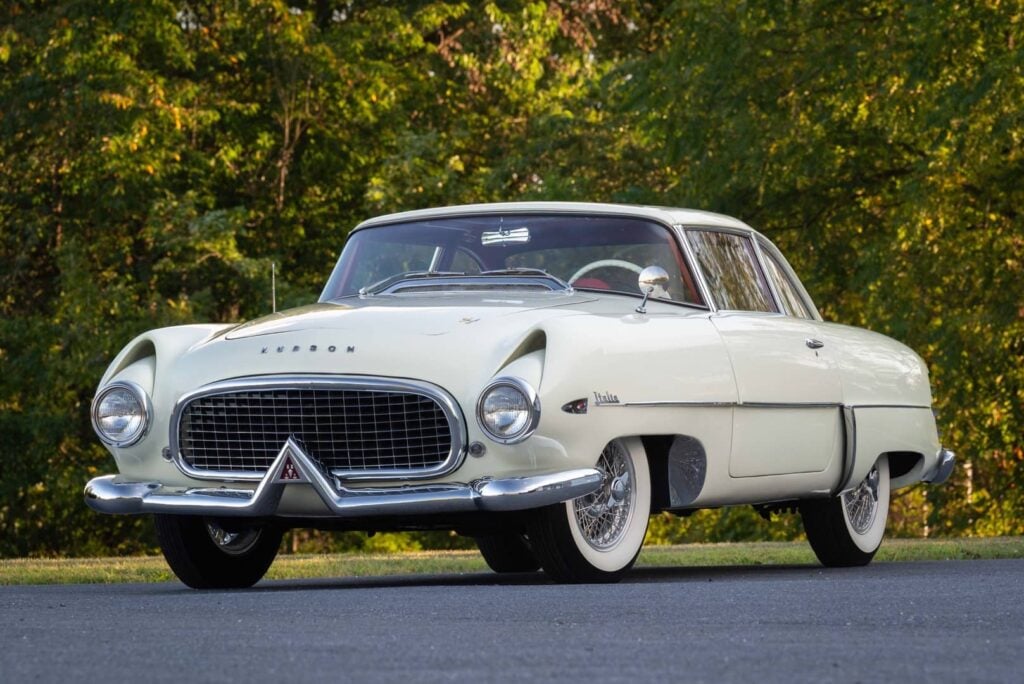
The 1955 Hudson Italia stands as one of the most eccentric and ambitious collaborations of the post-war American automotive industry. During a financially challenging period for Hudson Motor Car Company, the car was conceived as a halo model to revitalize the brand’s image and increase showroom traffic. Chief Stylist Frank Spring designed the avant-garde bodywork, which was then sent to Italy for hand-building by the renowned coachbuilder Carrozzeria Touring of Milan. Despite being based on the modest Hudson Jet chassis and utilizing the reliable inline-six engine of the Super Jet, the Italia was visually distinct. It featured highly unconventional styling cues, such as reverse-slanted C-pillars, functional quarter-panel air scoops, and unique, curved wraparound glass. This bold fusion of American mechanicals with genuine European flair set it apart.
The combination of Detroit engineering and Italian coachbuilding resulted in a vehicle of remarkable scarcity and cost. Priced at nearly $4,800, significantly higher than most mainstream American luxury cars, the Italia was never intended for mass production. Ultimately, only 25 examples, including the prototype, were ever constructed. The project proved too costly and complex for the struggling company. After Hudson merged with Nash-Kelvinator to form American Motors Corporation (AMC) in 1954, the new management promptly canceled the costly, low-volume program. Today, this rarity ensures that the 1955 Hudson Italia remains a highly sought-after collector car and a symbol of Hudson’s final, desperate attempt at independent innovation.
The example being offered by RM Sotheby’s at their 2025 Hershey Auction is the 15th Italia produced and comes from long-term ownership of 34 years. Its history has been traced from its original owner to the consignor, a well-known judge in the world of concours throughout the country.
Estimate: $425,000 – $500,000
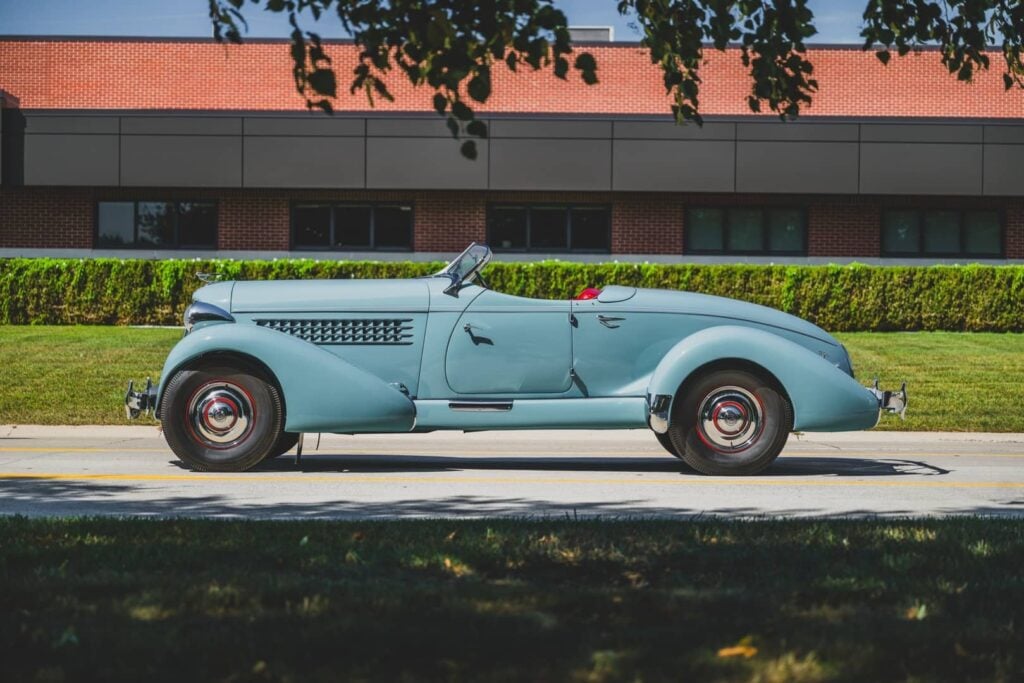
During the challenging years of the Great Depression, the 1935 Auburn 851 Custom Speedster emerged as a powerful symbol of American performance and extravagant Art Deco design. Conceived by E. L. Cord, the head of the struggling Auburn Automobile Company, the Speedster was intended to be a showpiece that defied economic hardship. The car’s unforgettable styling was the work of designer Gordon Buehrig, who crafted the iconic boattail bodywork, dramatic pontoon fenders, and a sharply raked windscreen. To visually convey its power, the Speedster featured sweeping, chrome-plated external exhaust pipes, a hallmark that instantly made it recognizable as a machine built for prestige and velocity.
Beyond its striking facade, the 851 Custom Speedster delivered genuine performance, centered around its 4.6L Lycoming straight-eight engine. The pivotal upgrade was the “Custom” designation, which added a Schweitzer-Cummins centrifugal supercharger, significantly boosting the engine’s output to an impressive 150 horsepower. This power translated into verifiable speed: every Speedster sold came equipped with a dash plaque signed by legendary endurance racer Ab Jenkins, certifying that the car had been officially tested and guaranteed to exceed 100 mph before delivery to the customer. As one of the final, magnificent products of the Auburn brand, the 851 Custom Speedster cemented its status as one of the most desirable and defining American Classics.
The example being offered by RM Sotheby’s at their 2025 Hershey Auction stands out as the single non-supercharged Speedster produced and was completed in the original Auburn facility in Auburn, Indiana, rather than Connersville. It still features its original engine, chassis, and body and benefits from a restoration that finished it in factory-correct Duck Egg Blue.
Estimate: $625,000 – $725,000
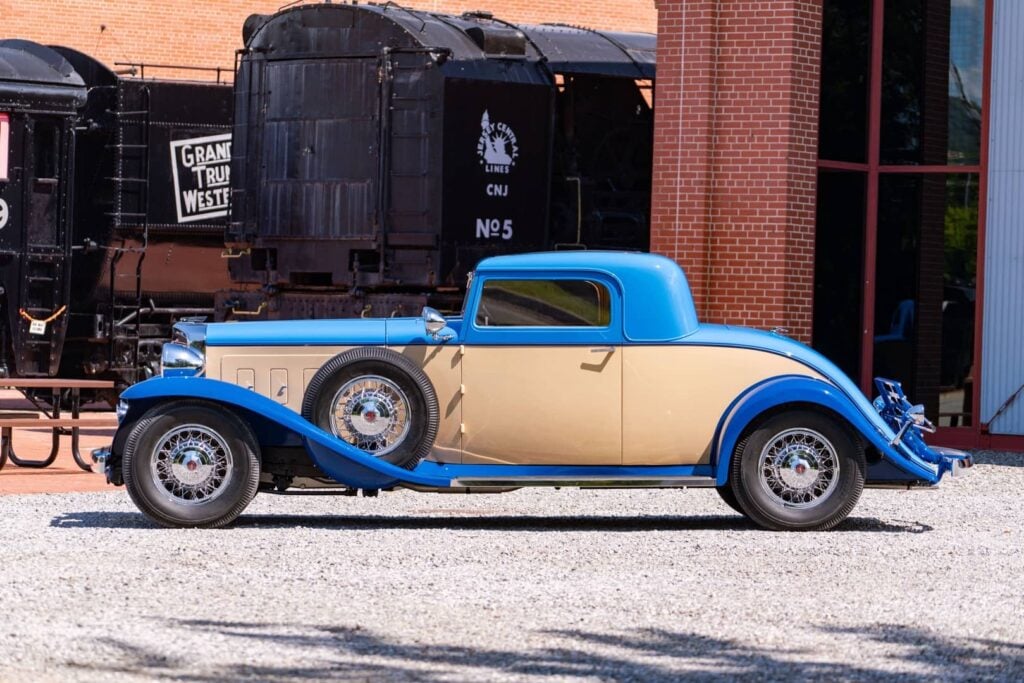
The 1931 Marmon Sixteen, the final and defining masterpiece of the Marmon Motor Car Company, was a powerful yet ill-timed attempt to dominate the American luxury market. Conceived by automotive engineer Howard Marmon, the design brief was simple: create the most powerful and technologically sophisticated car in America. The heart of this ambition was its legendary V16 engine, a 491-cubic-inch all-aluminum powerhouse capable of generating 200 horsepower, an impressive figure for its time. This engine, lighter and more advanced than its closest competitor, Cadillac’s V16, was paired with advanced chassis engineering designed for silent, effortless speed.
Launched directly into the economic collapse of the Great Depression, the Sixteen was a technological triumph that quickly became an economic casualty. Marmon commissioned renowned coachbuilders to dress the impressive chassis, with many of the most striking examples, including the rare Two-Passenger Coupe, being bodied by LeBaron. LeBaron’s design for the coupe emphasized sleekness, minimal ornamentation, and pure, elegant proportions, perfectly complementing the silent power of the V16 engine. Despite its critical acclaim, the high cost of production and the devastating financial climate meant Marmon could only produce around 400 Sixteen models before the company went into receivership in 1933.
The example being offered by RM Sotheby’s at their 2025 Hershey Auction has a very well-documented history and presents nicely thanks to an older restoration. It retains its original body, engine, and chassis and is finished in the rarest configuration from the Marmon factory – in fact, just six examples of the Two-Passenger Coupe are known to survive to this day.
Estimate: $750,000 – $900,000
